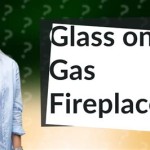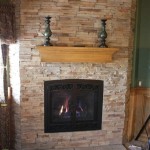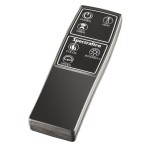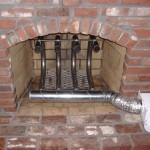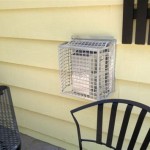Types of Fireplaces: A Comprehensive Guide
Fireplaces have served as central features in homes for centuries, providing warmth, ambiance, and a focal point for gathering. While the basic function remains the same, fireplace designs and technologies have evolved significantly, resulting in a diverse range of options available today. Understanding the different types of fireplaces can help homeowners make informed decisions about choosing the best option for their needs and preferences.
Wood-Burning Fireplaces
Wood-burning fireplaces are the traditional and arguably most iconic type of fireplace. They operate by burning wood to generate heat and create a visually appealing flame. These fireplaces are often constructed from brick, stone, or metal and feature a chimney for venting smoke and combustion byproducts.
The primary advantage of wood-burning fireplaces is their authentic aesthetic. The crackling sound of wood and the natural flame create a cozy and inviting atmosphere. Wood is also a renewable resource, although the sourcing and burning practices can have environmental implications. Wood-burning fireplaces can provide significant heat output, especially with efficient designs and proper wood selection.
However, wood-burning fireplaces also have several drawbacks. They require regular maintenance, including cleaning the chimney to prevent creosote buildup, which can be a fire hazard. Storing and handling firewood can be inconvenient and require dedicated space. The burning of wood also produces smoke and particulate matter, which can contribute to air pollution. Furthermore, older wood-burning fireplaces can be inefficient, losing a significant amount of heat up the chimney.
Modern wood-burning fireplaces often incorporate features designed to improve efficiency and reduce emissions. These features may include airtight doors, catalytic combustors, and secondary combustion systems. These advancements help to burn wood more completely, reducing smoke and increasing heat output.
Gas Fireplaces
Gas fireplaces offer a convenient and efficient alternative to wood-burning fireplaces. They use natural gas or propane as fuel and can be ignited with the flip of a switch or the press of a button. Gas fireplaces are available in a wide range of styles, from traditional designs that mimic wood-burning fireplaces to modern and contemporary options.
One of the main advantages of gas fireplaces is their ease of use. They require no wood handling or storage, and they can be turned on and off easily. Gas fireplaces also offer consistent heat output and can be controlled with a thermostat. They produce significantly less particulate matter and smoke compared to wood-burning fireplaces, making them a cleaner option.
Gas fireplaces typically require a dedicated gas line and venting system. Venting options include direct vent, which vents directly outside through a wall, and vent-free, which does not require venting. Vent-free gas fireplaces are generally not recommended for enclosed spaces due to the potential for carbon monoxide buildup. It's essential to consult with a qualified professional to ensure proper installation and safety.
Gas fireplaces often feature realistic artificial logs that mimic the appearance of burning wood. However, some models offer alternative media, such as glass beads or decorative stones, for a more contemporary look. The flame appearance can also be adjusted to create different effects.
Electric Fireplaces
Electric fireplaces are a versatile and easy-to-install option that requires no venting or fuel lines. They operate by heating a coil or element, which then radiates heat into the room. Electric fireplaces are often designed to mimic the appearance of a traditional fireplace, with simulated flames and glowing embers.
The primary benefit of electric fireplaces is their convenience and ease of installation. They can be plugged into a standard electrical outlet and do not require any structural modifications to the home. Electric fireplaces are also relatively inexpensive compared to other types of fireplaces.
Electric fireplaces are available in a variety of styles, including freestanding units, wall-mounted units, and inserts that can be placed into existing fireplace openings. The flame effect is typically created using LED lights and mirrors, which can be adjusted to create different levels of brightness and flicker.
While electric fireplaces provide supplemental heat, they are generally not as efficient as wood-burning or gas fireplaces. They are best suited for smaller spaces or for providing ambiance rather than primary heating. Some electric fireplaces offer a "flame-only" mode, which allows homeowners to enjoy the visual appeal of the flames without producing heat.
Ethanol Fireplaces
Ethanol fireplaces, also known as bio-ethanol fireplaces, are a modern and environmentally conscious option. These fireplaces burn liquid ethanol fuel, which is derived from renewable resources such as corn or sugarcane. They produce a clean-burning flame with minimal smoke or ash.
One of the key advantages of ethanol fireplaces is that they do not require venting. They are typically designed as freestanding units or wall-mounted units and can be placed in almost any room. Ethanol fireplaces are also relatively easy to install and maintain.
Ethanol fireplaces offer a contemporary aesthetic, with sleek and minimalist designs. The flame is typically visible through a glass enclosure, creating a visually appealing focal point. The heat output of ethanol fireplaces is generally lower than that of wood-burning or gas fireplaces, making them better suited for providing ambiance and supplemental warmth.
The main consideration with ethanol fireplaces is the cost of the fuel. Ethanol fuel can be more expensive than wood or gas. It is also essential to use high-quality ethanol fuel specifically designed for fireplaces to ensure safe and efficient operation.

Types Of Fireplaces For Your Home Which One Is Best Panadero

Diffe Types Of Fireplaces Compared Full Service Chimney

Types Of Fireplaces And The Pros Cons Each One
:strip_icc()/modern-black-fireplace-table-DfwDKTzjqTp8rWyWL-hZdq-3c071e74fece4e6b9fdfe223a3d8ab3c.jpg?strip=all)
Types Of Fireplaces And The Pros Cons Each

Diffe Types Of Fireplaces Elegant Fireside And Patio

Types Of Fireplaces

The Diffe Types Of Fireplaces Which Is Best For Your Home Embers Custom Fireplace Gas S
.aspx?strip=all)
Types Of Gas Fireplaces Styles Venting Explained Regency

What You Need To Know About A Fireplace Chicagoland Chimney Restoration

What Are The Diffe Types Of Fireplaces And Their S Spotix Blog

